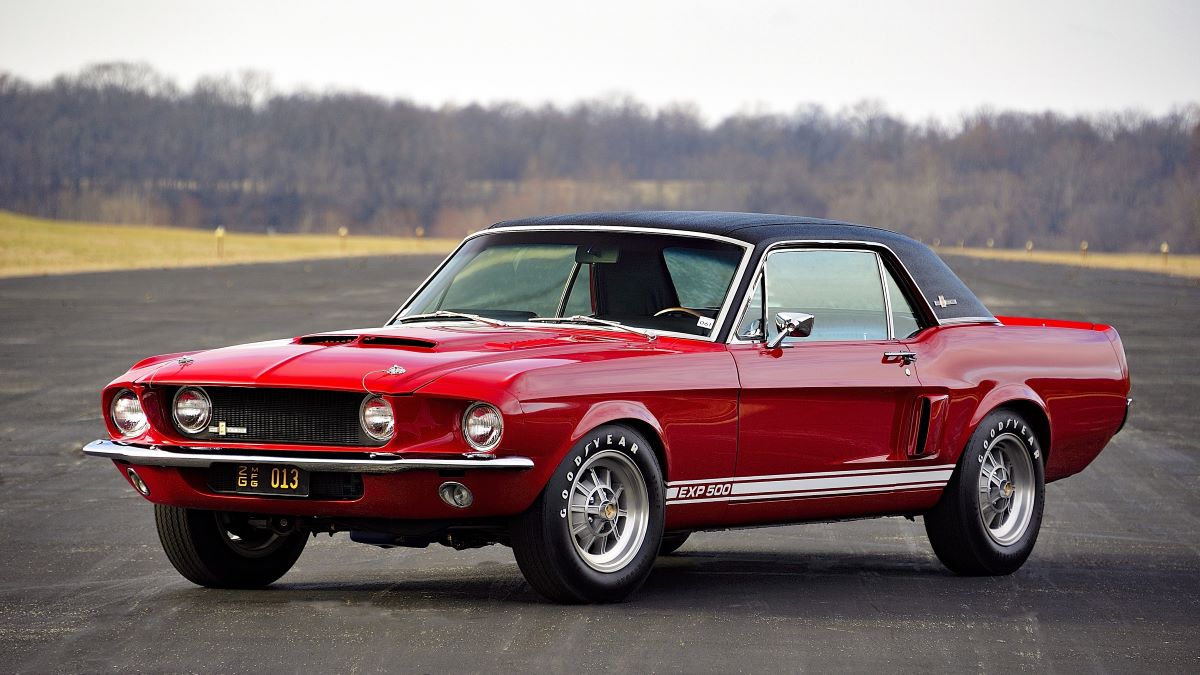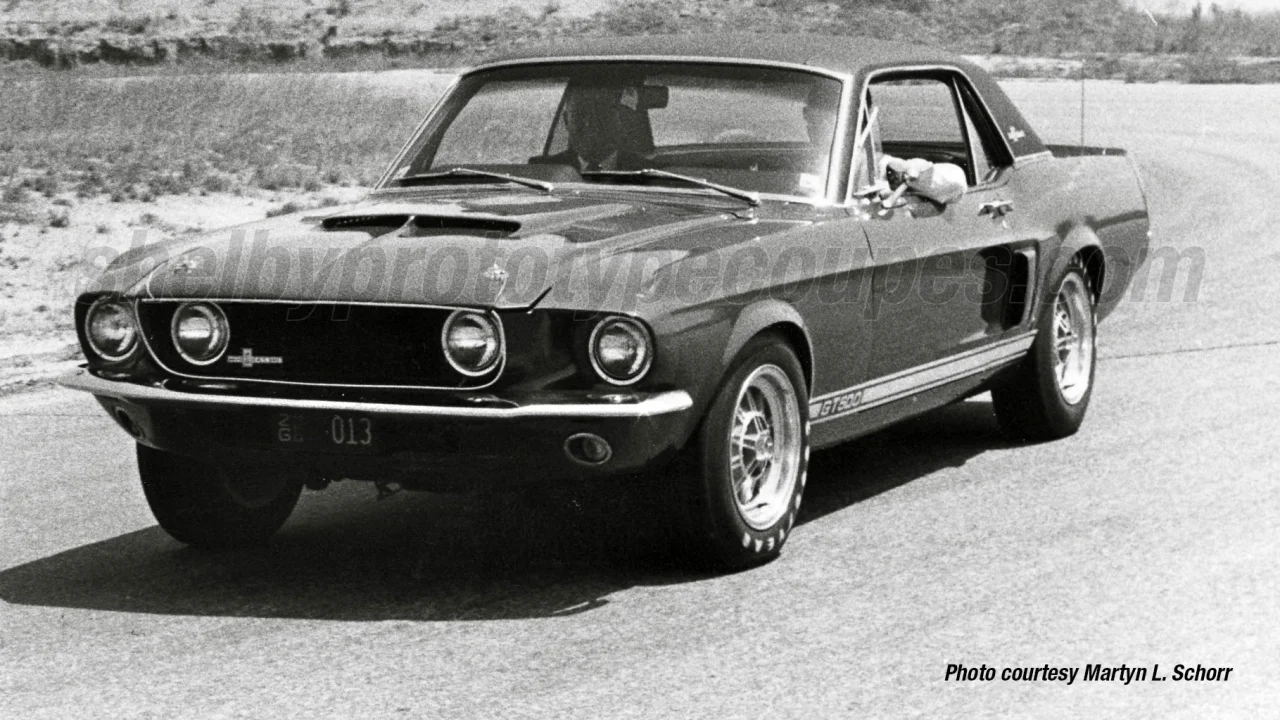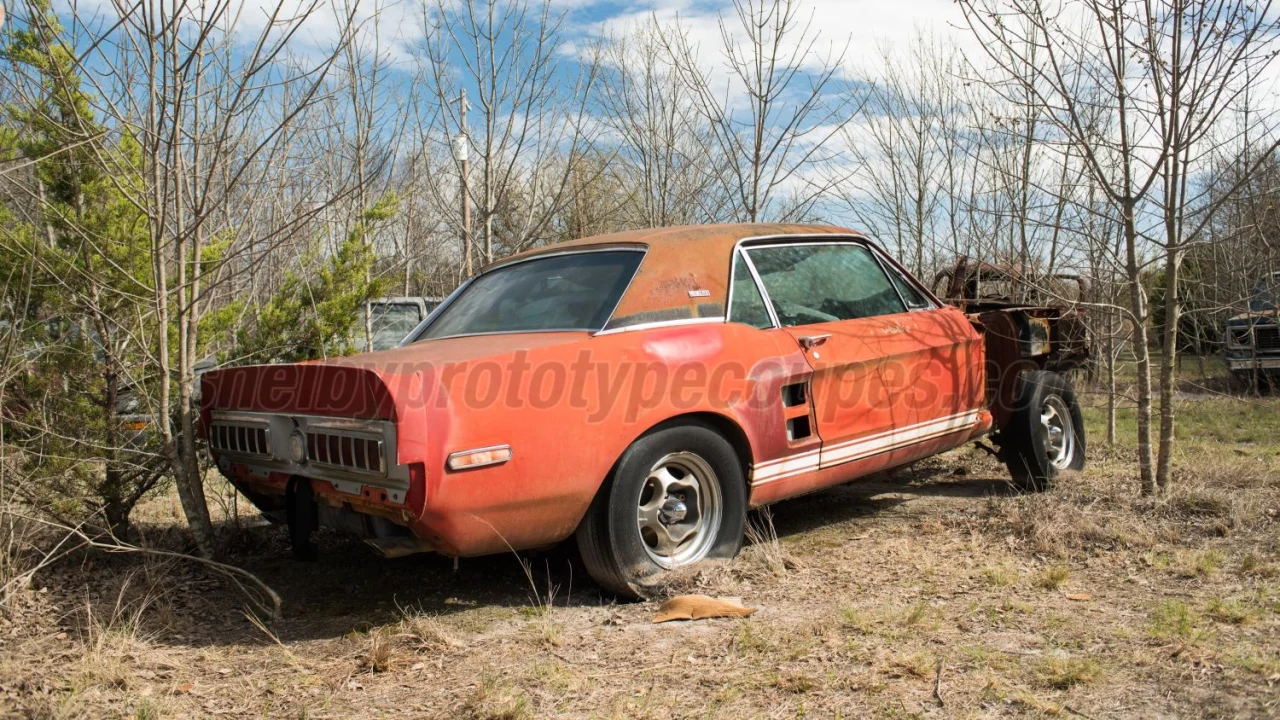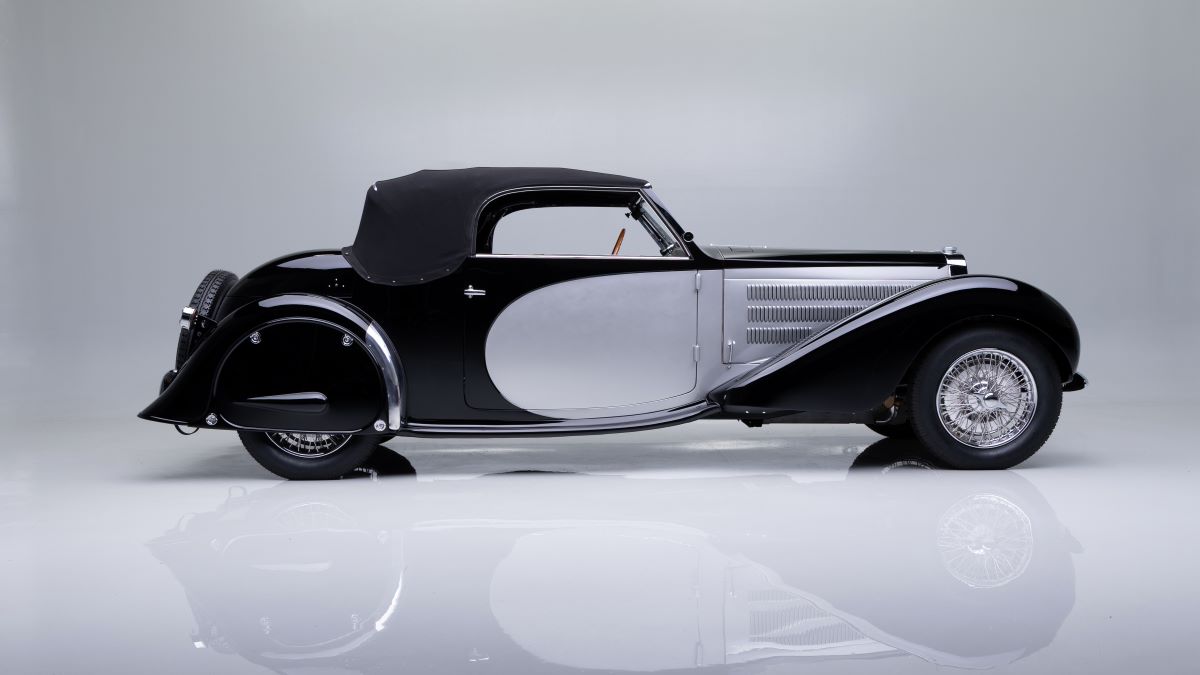On Friday, August 15, 2025, The Quail, A Motorsports Gathering, will honor the 60th anniversary of the legendary Shelby Mustang GT350 in Carmel, California, as part of Monterey Car Week. Joining the celebration will be Barrett-Jackson Chairman/CEO Craig Jackson and Chief Brand Officer Carolyn Jackson, who will showcase “Little Red,” the renowned 1967 Shelby EXP500 “double prototype” coupe. Little Red holds a special place in Shelby American’s storied legacy and led to the development of the GT500, the predecessor of the GT350.
In August 1966, just months after Ford’s historic victory over Ferrari at Le Mans, the San Jose Ford plant received a special request from Shelby American for three Mustangs: a convertible, a fastback and a coupe. That coupe became Little Red, the only notchback coupe ever built by Shelby America in Los Angeles. As an experimental prototype, it served as a proving ground for groundbreaking innovations. Carroll Shelby, along with Fred Goodell ‒ the Chief Engineer of Shelby American at the time ‒ and the team used the car to explore the fusion of Ford’s formidable 428ci engine with their vision of a street-legal machine capable of track-ready performance.

Little Red stands out as the sole 1967 Mustang coupe factory-equipped with the 428 engine – and it was the very first coupe to receive this powerhouse. Beyond that, it remains the only GT coupe ordered and built with factory-installed dual-quad carburetors. Adding to its uniqueness, Little Red is one of just two known 1967 GT Mustangs to be outfitted with a black Connolly leather interior, the other being the convertible that Shelby took delivery of alongside it. Little Red became the second GT500 to be serialized and completed; the first was the fastback (0100) and the third was the convertible (0139).

For decades, Little Red was believed to be lost to history, presumed crushed like so many prototype vehicles of its time. But in a remarkable twist, in 2018 the car was discovered in a field in rural North Texas, where it had quietly sat hiding in plain sight and untouched for over 20 years. The search was led by Craig Jackson and classic car restoration expert Jason Billups, supported by a team of leading automotive historians and specialists. Their efforts revealed that Little Red had been re-skinned as a 1968 with many prototype parts and badging for what would become 5,000 supercharged ‘68 coupes and sold rather than scrapped. It had remained with the same owner for more than two decades. Long thought to be gone forever, its rediscovery is now considered one of the most significant finds in American collector car history.
After the discovery of Little Red, Jackson began crowdsourcing information to piece together the car’s unique history. Through this effort, he connected with the car’s former owners, as well as individuals who had worked on it at Shelby American. These conversations unearthed invaluable insights, including a photograph showing it was marked with EXP 500 in ’67 trim and the only known color photograph of the car, from Walter Nelson who worked on the car as a Shelby American employee, critical in accurately restoring its original paint scheme. Jackson also uncovered fascinating details about the prototype’s evolution, such as a period when it was equipped with twin Paxton superchargers.
As an EXP500 prototype, Little Red underwent numerous changes throughout its life, constantly evolving as Shelby American tested new ideas. Before beginning the restoration, one of Jackson’s first challenges was to determine the exact point in time when Little Red represented its most iconic and complete form. His goal was to restore the car as accurately as possible to that defining moment, capturing not just its physical configuration, but its historical significance as well.

When Jackson acquired Little Red, the car was in a severely deteriorated state and both the front end and engine were missing. Restoring such a unique prototype was no ordinary task. Over the course of two years, the restoration team led by Jackson and Jason Billups meticulously rebuilt the car using original Shelby schematics and insights from several members of the 1967 build and test team. Today, Little Red stands as a faithful recreation of its most iconic form, featuring twin Paxton superchargers, a reinforced C6 automatic transmission with an experimental tail shaft, outboard grille lights, a vented hood and, of course, its signature Candy Apple Red paint.
Jackson is widely recognized as a master restorer with a passion for preserving automotive history, particularly when it comes to iconic American muscle. Among his most celebrated projects is a beautifully restored 1965 Shelby GT350, a historic PR car that earned the coveted “triple crown” of Mustang accolades: Gold in Division One at the Mid-America Ford and Shelby Meet, Mustang Club of America (MCA) Gold in the Thoroughbred Class, as well as the Premier Award from the Shelby American Automobile Club (SAAC) at SAAC-43. This exceptional GT350 later commanded $962,500 at Barrett-Jackson’s March 2021 auction, reflecting both its pedigree and the quality of Jackson’s restoration work.

In addition to showcasing Little Red, the Jacksons will also present a restored 1936 Bugatti Type 57 Stelvio at the 74th Pebble Beach Concours d’Elegance that same weekend on Sunday, August 17. Personally restored by Craig Jackson and his team, the elegant prewar Bugatti highlights his dedication to craftsmanship across a wide spectrum of automotive history, from groundbreaking American prototypes to timeless European masterpieces.
Little Red will also be displayed with “Green Hornet” the 1968 Shelby EXP500 “double prototype” at the Shelby American Automobile Club (SAAC) 50th Anniversary event at Sonoma Raceway, August 21-24.
This article was originally published on Barrett-Jackson.com

